

Anatomy of the brain. The human brain and the mind. Scientists discover most relaxing tune ever. Neuroscience Movies. "...And when he came to the place where the wild things are they roared their terrible roars and gnashed their terrible teeth and rolled their terrible eyes and showed their terrible claws till Max said "BE STILL!

" Bluebrain. Le cerveau à tous les niveaux. Hormones Stress and the Brain. La conciencia humana va mucho más allá de la actividad cerebral: La dimensión cuántica del ser humano. Por primera vez de forma sistematizada, la comunidad científica conviene en señalar que la conciencia humana enlaza con la dimensión de la física cuántica y no con la neurociencia, tal y como hasta ahora tradicionalmente se venía entendiendo.
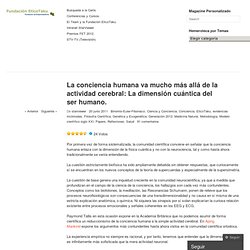
La cuestión estrictamente biofísica ha sido ampliamente debatida sin obtener respuestas, que curiosamente sí se encuentran en los nuevos conceptos de la teoría de supercuerdas y especialmente de la supersimetría. La cuestión de base genera una inquietud creciente en la comunidad neurocientífica, ya que a medida que profundizan en el campo de la ciencia de la conciencia, los hallazgos son cada vez más contundentes. Conceptos como los biofotones, la meditación, las Resonancias Schumann, ponen de relieve que los procesos neurofisiológicos son consecuencias de una transdimensionalidad y no causa en sí misma de una estricta explicación anatómica, o química. Definitivamente el ser humano es mucho más que un cerebro. StarViewerTeam International 2011. Amanda Hahn's personal site. Encyclopedia of Computational neuroscience. Temple Grandin.
Early life and education[edit] Grandin was born in Boston, Massachusetts, to Eustacia Cutler and Richard Grandin.

The Neuroscience Revolution is Here: 5 Ways To Supercharge Your Brain With TechnologyTheFeelGoodLifestyle.com. “The brain is the last and grandest biological frontier, the most complex thing we have yet discovered in our universe. It contains hundreds of billions of cells interlinked through trillions of connections. The brain boggles the mind.” ~James D. Is Twitter a Complex Adaptive System. I’ve seen a bunch of posts bubble up over the past few days that are really sparking my curiousity about what is really going on with Twitter, so I need to do a little brain dump.
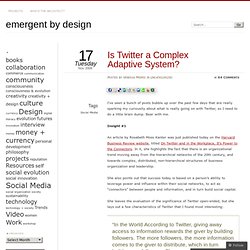
Bear with me. Insight #1 An article by Rosabeth Moss Kanter was just published today on the Harvard Business Review website, titled On Twitter and in the Workplace, It’s Power to the Connectors. Is Neuroscience the Death of Free Will? The Stone is a forum for contemporary philosophers and other thinkers on issues both timely and timeless. Is free will an illusion? Some leading scientists think so. For instance, in 2002 the psychologist Daniel Wegner wrote, “It seems we are agents. It seems we cause what we do… It is sobering and ultimately accurate to call all this an illusion.” More recently, the neuroscientist Patrick Haggard declared, “We certainly don’t have free will. Twitter is closer to emulate a Neural Network than Facebook. When we think of Twitter and the innovation behind it, the first thing we all think is 140. 140 characters is without a doubt an amazing innovation that Twitter introduced which makes communication flow faster, forces twitters to summarize a piece of news or information, or an idea or an opinion and allows followers to get information or an idea faster as well.
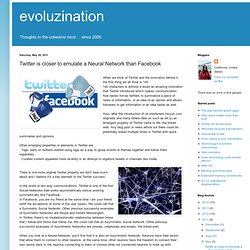
Also, after the introduction of url shorteners (tinyurl,com originally and many others later on such as bit.ly) an emergent property of Twitter came to life: the linked web. Any blog post or news article out there could be potentially linked multiple times in Twitter with quick summaries and opinions. Other emerging properties or elements in Twitter are:. Tags, early on twitters started using tags as a way to group events or themes together and follow them separately.. Curated content appeared more recently in an attempt to organize tweets in channels like mode. Brain&Mind.
BRAINMAPS.ORG - BRAIN ATLAS, BRAIN MAPS, BRAIN STRUCTURE, NEUROINFORMATICS, BRAIN, STEREOTAXIC ATLAS, NEUROSCIENCE. Brains / neurology. Brain Parts Function. The brain is the most complex organ in the body.

It is the organ that allows us to think, have emotions, move, and even dream. The Science of Why We Don't Believe Science. Illustration: Jonathon Rosen "A MAN WITH A CONVICTION is a hard man to change.
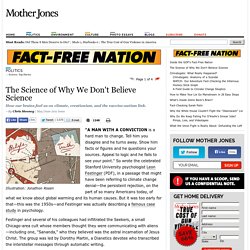
Tell him you disagree and he turns away. Show him facts or figures and he questions your sources. Appeal to logic and he fails to see your point. " What does a doodle do? It boosts your memory and concentration. You know you're bored when you start shading in the squares of your notebook.
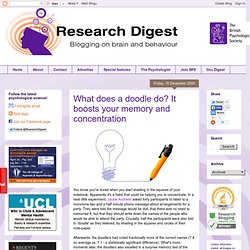
Apparently it's a habit that could be helping you to concentrate. In a neat little experiment, Jackie Andrade asked forty participants to listen to a monotone two and a half minute phone message about arrangements for a party. Left Brain. Especiales de lainformacion.com - El mal del cerebro## Right Brain. Mind and Brain. Inception Explained - An interactive animated infographic. Brain. Neuroscience. Visual Decision Networks. Brain. Wallpaper1206472.jpg (JPEG Image, 1920x1080 pixels) - Scaled (57%)
Daniel J. Siegel - The Mindful Brain: The Neurobiology of Well-Being. Welcome - Cambridge Brain Sciences. More Deja Vu Theories" The Hologram Theory.
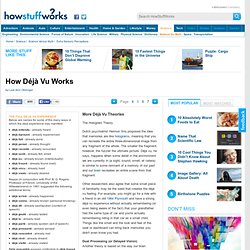
Rubik cube solved in 20 movements or less. Ho'oponopono et le fonctionnement du cerveau. Psychology & neuroscience. Neurofeedback. Kymatica (2009) Center for Brain Science. A Brief Guide to Embodied Cognition: Why You Are Not Your Brain. Embodied cognition, the idea that the mind is not only connected to the body but that the body influences the mind, is one of the more counter-intuitive ideas in cognitive science.
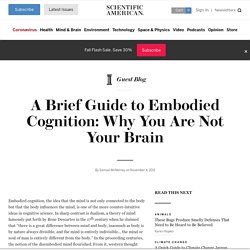
In sharp contrast is dualism, a theory of mind famously put forth by Rene Descartes in the 17th century when he claimed that “there is a great difference between mind and body, inasmuch as body is by nature always divisible, and the mind is entirely indivisible... the mind or soul of man is entirely different from the body.” In the proceeding centuries, the notion of the disembodied mind flourished. From it, western thought developed two basic ideas: reason is disembodied because the mind is disembodied and reason is transcendent and universal. However, as George Lakoff and Rafeal Núñez explain: Cognitive science calls this entire philosophical worldview into serious question on empirical grounds... What exactly does this mean? Embodied cognition has a relatively short history. Actualités articles 1 - Le cerveau. 10 Things You Didn't Know About the Brain. Heirarchical Temporal Memory. 10% of the Brain Myth.
Let me state this very clearly: There is no scientific evidence to suggest that we use only 10% of our brains. Let's look at the possible origins of this "10% brain use" statement and the evidence that we use all of our brain. Where Did the 10% Myth Begin? The 10% statement may have been started with a misquote of Albert Einstein or the misinterpretation of the work of Pierre Flourens in the 1800s. Neuroscience. Brain 'entanglement' could explain memories - life - 12 January 2010.
Subatomic particles do it. Now the observation that groups of brain cells seem to have their own version of quantum entanglement, or "spooky action at a distance", could help explain how our minds combine experiences from many different senses into one memory. Previous experiments have shown that the electrical activity of neurons in separate parts of the brain can oscillate simultaneously at the same frequency – a process known as phase locking . The frequency seems to be a signature that marks out neurons working on the same task, allowing them to identify each other.
Making Brain Cells: ScienCentral News Video. Neuroscience And Cognition. Brain scans support findings that IQ can rise or fall significantly during adolescence. IQ, the standard measure of intelligence, can increase or fall significantly during our teenage years, according to research funded by the Wellcome Trust, and these changes are associated with changes to the structure of our brains. The findings may have implications for testing and streaming of children during their school years. Across our lifetime, our intellectual ability is considered to be stable, with intelligence quotient (IQ) scores taken at one point in time used to predict educational achievement and employment prospects later in life.
However, in a study published October 20 in the journal Nature, researchers at the Wellcome Trust Centre for Neuroimaging at UCL (University College London) and the Centre for Educational Neuroscience show for the first time that, in fact, our IQ is not constant. The researchers, led by Professor Cathy Price, tested 33 healthy adolescents in 2004 when they were between the ages of 12 and 16 years. Iain McGilchrist: The divided brain. Neuroscience. Neuroscience. Au coeur de la science avec Futura-Sciences. The Age Of Insight. Eric Kandel is a titan of modern neuroscience. He won the Nobel Prize in 2000 not simply for discovering a new set of scientific facts (although he has discovered plenty of those), but for pioneering a new scientific approach.
Transhuman. Talking about neurocognition. Home page - StumbleUpon.